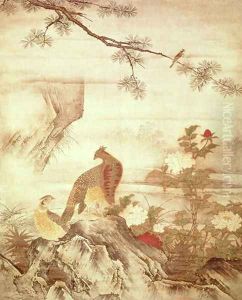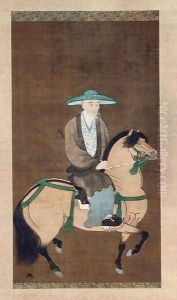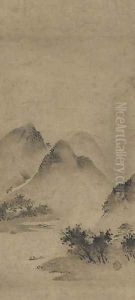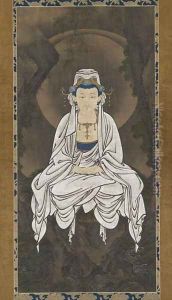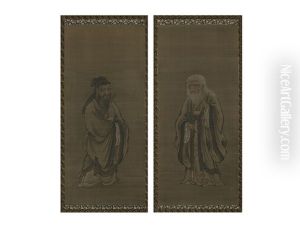Motonobu Kano Paintings
Motonobu Kano was a prominent Japanese painter who played a key role in the development of the Kano school of painting, which became one of the most influential and long-lasting schools of Japanese painting. Born in 1476 in Kyoto, Japan, to a family with a strong artistic lineage, his father Kano Masanobu was the founder of the Kano school, which fused the styles of Chinese ink painting with Japanese artistic traditions.
Motonobu succeeded his father as the head of the school and greatly expanded its influence. He was not only adept at ink painting but also excelled in the use of vibrant colors. His work often featured themes from nature, such as birds and flowers, landscapes, as well as classical literature and historical events. Motonobu was especially known for his bold brushwork and strong compositions, which were innovative at the time and set the standard for future generations of Kano painters.
During Motonobu's lifetime, the Kano school began to receive patronage from the ruling shogunate, which allowed the school to thrive and become the dominant style of painting in Japan for several centuries. Motonobu's ability to blend the formal and often rigid style of Chinese painting with the more decorative and free Japanese aesthetic resulted in a unique style that was highly sought after.
Motonobu was not only an artist but also an educator and leader. He trained many pupils, including his son Kano Eitoku, who would go on to become another central figure in the Kano school. Through his teaching, he established a strong foundation for the Kano school's artistic principles, which were passed down through generations.
Motonobu Kano's works were highly influential in defining the visual culture of the Muromachi and Azuchi-Momoyama periods. His legacy continued well beyond his death in 1559, as the Kano school maintained its prestige and dominance in Japanese art until the Meiji Restoration in the late 19th century.
